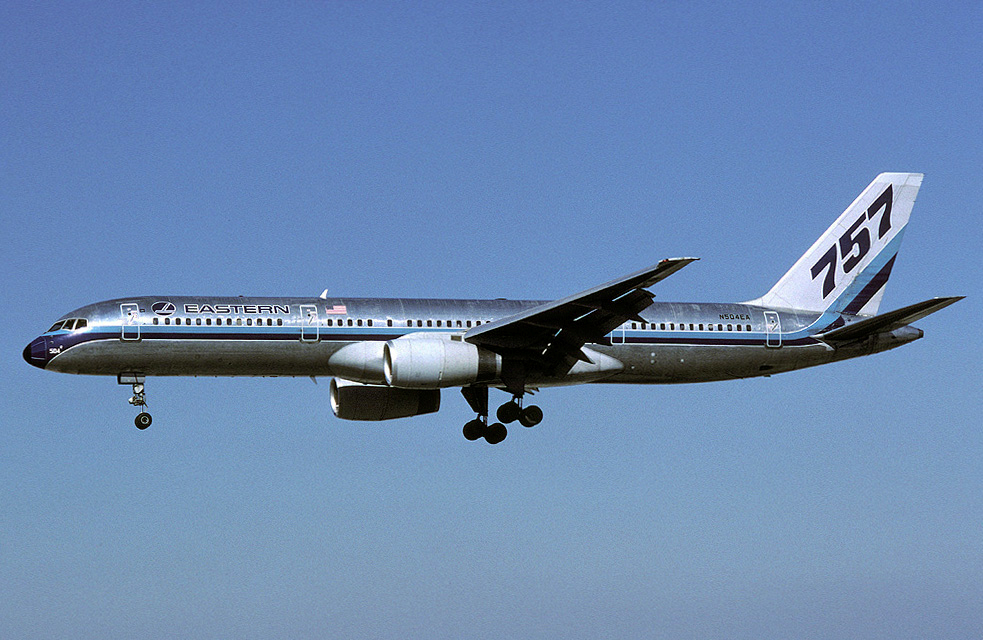Part 1–Boeing 757: An analysis of facts and myths
Subscription required.
By Bjorn Fehrm
Part 1 of 3
Introduction
The Boeing 757 was developed in the late 1970s as a replacement for Boeing’s popular 727 mid-range single aisle aircraft. Starting from the smaller 727, it ultimately grew to 180 to 230 seat capacity and US transcontinental range. With initial orders from Eastern Airlines and British Airways, the aircraft nonetheless had poor sales through most of the 1980s, picking up with a surge of orders in 1988-1990 when major deals were announced from American, Delta and United airlines.

Figure 1. Boeing 757-200 of launch customer Eastern Airlines.
Following the 1991 Persian Gulf War and recession, orders plunged until the mid-decade with a respectable resurgence. After 9/11, sales dried up and Boeing terminated the program.
Summary
- The 757 program had slow sales in its first decade, robust sales for a few years then declining sales through most of the 1990s.
- Sales were respectable in the late 1990s but dried up after 9/11.
- Boeing efforts to boost sales with the 757-300 were a failure--only 55 were sold. 757F sales were a moderate success.
- The 757-200 had strong engines for its time (especially the Rolls Royce equipped models), we dissect if this is still true.
- With the 757 being the only narrow-body with trans-Atlantic range, what is missing from today's Airbus A321 and Boeing 737 MAX9 to make the cut? What can be done with small changes will be answered in part 2.
- How will a future clean sheet NSA perform compared to these three? How much of a game-changer will a clean sheet design be if it enters service 2025? We look at the answers in part 3.
To read the rest of the article Login or Subscribe today.
Category: Airbus, American Airlines, Boeing, CFM, Delta Air Lines, Pratt & Whitney, Premium, Rolls-Royce, US Airways
Tags: 737 MAX, 737-9, 757, 757 Winglet, 757W, 777-300ER, A320NEO, A321NEO, Airbus, American Airlines, Boeing, CFM, Continental Airlines, Delta Air Lines, GTF, Pratt & Whitney, Rolls-Royce, United Airlines


